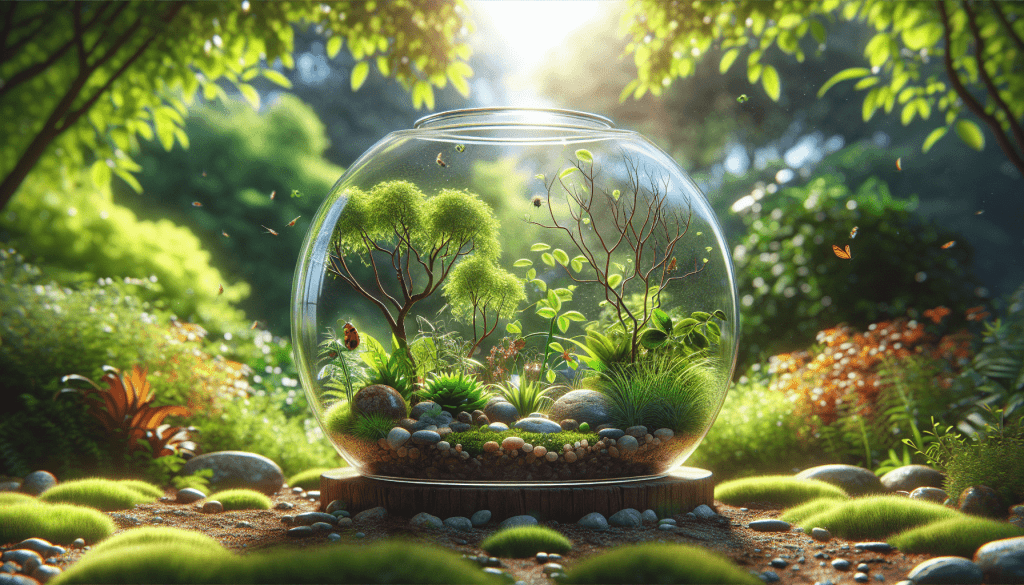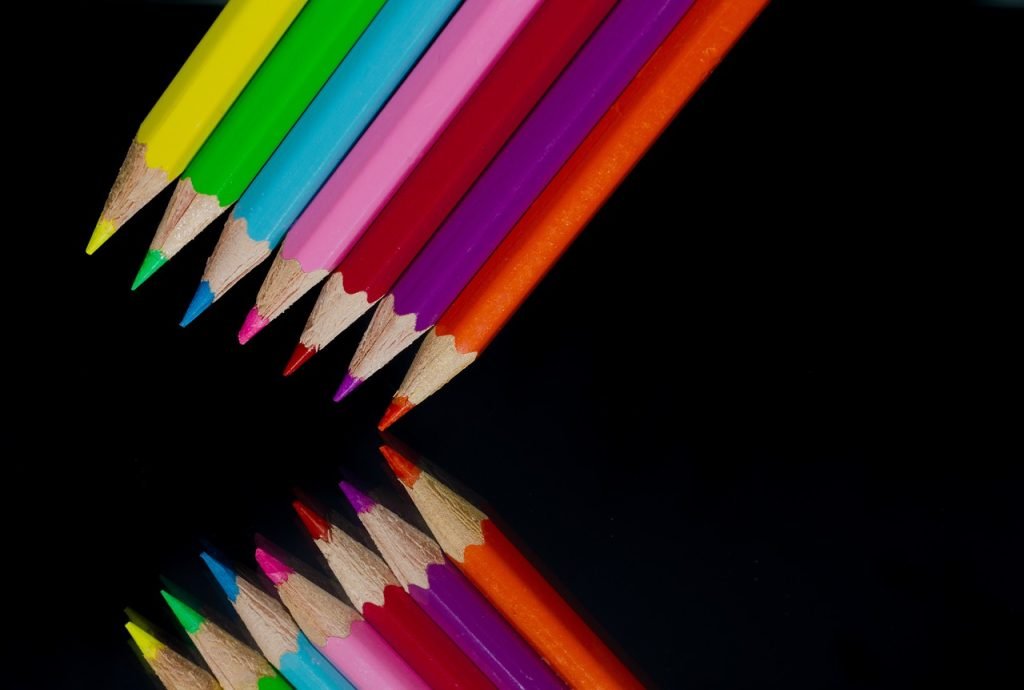Welcome to the fascinating world of insect observation! In “How Can I Build A Basic Outdoor Insect Observation Terrarium?” you’ll discover simple steps to create a wonderful habitat for observing insects right in your backyard. This easy-to-follow guide will walk you through selecting the perfect container, preparing the soil and plants, and gathering small critters for your terrarium. With a little creativity and some basic materials, you’ll have a miniature ecosystem teeming with life, perfect for learning and appreciating the tiny wonders of nature. Ready to embark on this exciting adventure? Let’s get started!
How Can I Build A Basic Outdoor Insect Observation Terrarium?
Ever wondered how you can build a basic outdoor insect observation terrarium? If you’re curious about the little critters that scuttle, fly, and crawl through your garden or local park, then creating your very own insect observation terrarium is an excellent way to get close and personal with these fascinating creatures.
Setting up an insect terrarium can be both an educational and enjoyable experience. Whether you’re doing it for a school project, helping your children with a fun nature activity, or simply delighting your inner entomologist, you’re in for a rewarding adventure. Let’s dive in, shall we?
Understanding the Basics
What is a Terrarium?
A terrarium is essentially a mini-ecosystem that you can observe. In this case, you’re creating a micro-habitat suitable for insects. It’s crucial to mimic the natural environment of your chosen insects as closely as possible.
Why Observe Insects?
Insects play a pivotal role in our ecosystem. They help pollinate plants, break down waste, and serve as food for other wildlife. Observing them can teach you a lot about biodiversity, life cycles, and the intricate web of life. Plus, insects are just plain fascinating!
Planning Your Terrarium
Before you start gathering supplies and inviting insects into their new home, some planning steps will ensure your terrarium is a stunning success.
Choosing the Right Container
Your first big decision is the container. Here’s a handy table to help you evaluate your options:
| Container Type | Pros | Cons |
|---|---|---|
| Glass Aquariums | Clear viewing, durable | Heavier, often pricier |
| Plastic Containers | Lightweight, cheaper | Can scratch, less durable |
| Recycled Jars | Eco-friendly, free with reuse | Limited size options |
| Wooden Frames with Netting | Great ventilation, customizable | DIY skills required, less secure |
Location, Location, Location
Picking a spot for your terrarium is key. It should receive natural light but not be in direct sunlight all day, as this can overheat your insects. A spot with indirect sunlight or dappled shade is ideal. Ensure it’s somewhere you can easily access for daily observation and maintenance.
Gathering Supplies
Prepare a checklist of materials and resources you’ll need. Here are the essentials:
- Container: Glass aquarium, plastic container, or any suitable recycled jar.
- Mesh or Netting: Essential for covering the container’s top to prevent escapes while allowing ventilation.
- Soil: Use organic soil free from pesticides.
- Natural Materials: Rocks, sticks, leaves, and small plants.
- Water Dish: A small shallow lid to hold water.
- Spray Bottle: For misting and maintaining humidity.
- Insects: Gather from your garden or purchase from a reputable source.
Setting Up Your Terrarium
Laying the Foundation
Start with a gravel layer at the bottom for drainage. On top of that, add a layer of activated charcoal to keep things fresh by filtering out toxins. Then, put in your organic soil. Here’s how it should look:
- Gravel Layer: About 1 inch.
- Activated Charcoal: Thin dusting.
- Organic Soil: 2-3 inches.
Adding Natural Decorations
Add rocks, twigs, leaves, and small plants to create a natural environment. This not only makes it look appealing but also provides hiding spots and climbing areas for your insects.
Installing the Water Dish
A small shallow lid filled with water keeps your insects hydrated. Ensure it’s shallow enough to prevent drowning but large enough to provide adequate moisture.
The Cover
Cover the top with mesh or netting secured with elastic bands or lid rings, ensuring there are no gaps for escapes but plenty of airflow.
Introducing Insects
Which Insects to Choose?
Not all insects are ideal for your terrarium. Some friendly options include:
- Ants: Easy to find, interesting colony behavior.
- Beetles: Hardy and easy to care for.
- Crickets: Relatively easy to maintain, audible chirping.
- Butterflies: For a touch of beauty and transformation observation.
Gathering and Adding Insects
Carefully and ethically collect your insects. Try not to disturb local ecosystems and be gentle while transferring them.
- Ants: Collect with a spoon and guide them into the container.
- Beetles and Crickets: Scoop gently or use tweezers.
- Butterflies: Handle with clean, dry hands or gently coax into the terrarium.
Maintaining Your Terrarium
Daily Checks
Ensure your insects have fresh water and food. Use your spray bottle for misting, keeping the environment humid but not waterlogged.
Feeding Your Insects
Different insects have different diets. Here are some common food choices:
| Insect Type | Food |
|---|---|
| Ants | Sugar water, bread crumbs, fruit |
| Beetles | Fruits, vegetables, leaf litter |
| Crickets | Vegetables, fruits, commercial cricket food |
| Butterflies | Sweet water, fresh flowers |
Temperature and Humidity
Keep the terrarium in a stable temperature environment. The ideal temperature range is 65-75°F (18-24°C). Mist the terrarium lightly every day or two to maintain humidity.
Cleaning and Care
Remove any uneaten food to prevent mold, and clean out waste regularly. Full soil changes aren’t often necessary but may be needed every few months, depending on the species and terrarium conditions.
Observations and Learning Opportunities
Note-taking and Journaling
Keep a journal of your observations. Document behaviors, interactions, and any changes in your insects. This is not only educational but enhances your understanding of their life cycles and habits.
Drawing and Photography
Sketching or photographing your insects can be a fun way to track changes over time and appreciate the intricate details of their anatomy.
Research and Education
Use books, online resources, or even reach out to local entomologists to deepen your knowledge. Share your learning with others to inspire a love of nature and insects.
Releasing Insects Back to Nature
While it’s enriching to observe insects up close, remember they belong in their natural habitat. Plan to release them back where you found them after a few weeks or if you notice signs of stress.
How to Release
- Choose a Safe Spot: Ideally where you found them originally.
- Gentle Transfer: Open the container and let them move out on their own.
- Return Materials: Leave some natural materials behind to help them adjust back quickly.
Troubleshooting Common Issues
Mold Growth
Mold can be a common issue in humid environments. Ensure you’re not over-misting and that the terrarium has ample ventilation.
Aggressive Behavior
If your insects show aggression or stress, consider separating them or seeking advice on compatible species.
Escaped Insects
Double-check your netting or mesh cover for any gaps and secure them tightly.
Final Thoughts
Creating an insect observation terrarium can be an incredibly rewarding experience. Not only does it provide insights into the fascinating world of insects, but it also fosters a deeper connection with nature. With a bit of preparation and care, you’ll have a thriving mini-ecosystem to observe and learn from.
Ready to embark on this delightful journey? Go ahead, gather your supplies, and start building your very own insect observation terrarium today. Happy observing!




